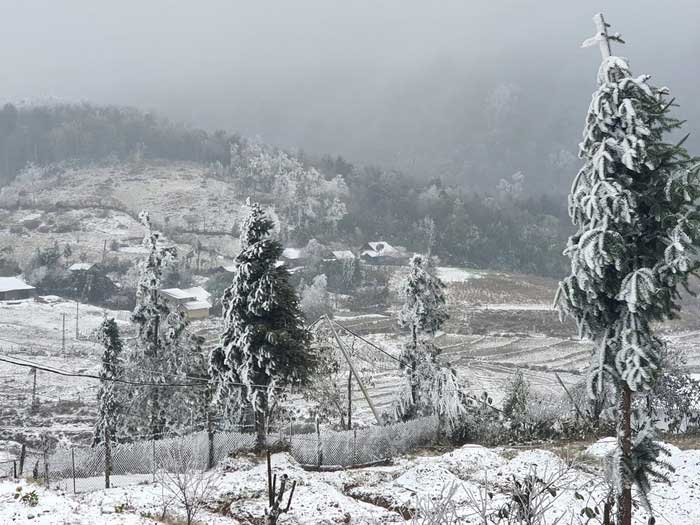Starting from December 16, northern provinces are expected to experience a significant cold spell, marking the first widespread cold snap of the season across the entire region…
Various Weather Patterns in Northern Vietnam
In recent days, northern provinces have seen weather characterized by scattered rain, light rain and fog during the night and morning, with sunny afternoons. The temperature has remained stable, fluctuating between 20-23 degrees Celsius, with highs reaching 25-28 degrees Celsius and a few places exceeding 28 degrees.
However, due to the influence of a strong cold air mass moving from the east combined with upper-level wind convergence, from December 13 to 14, some areas in the northern mountainous region may experience light rain and morning fog. The remaining areas will enjoy favorable weather, with no rain and temperatures remaining relatively stable, with some locations showing slight increases.
The forecast indicates that this weather pattern in the northern provinces will continue until the end of the week before the arrival of a new cold air mass. Regarding this cold air mass, the National Center for Hydro-Meteorological Forecasting has provided information to the public, predicting significant impacts on the weather in the northern and central provinces.

Morning scattered rain, fog, and sunny afternoons have been the dominant weather patterns in Hanoi in recent days. (Illustrative photo).
According to Mr. Nguyen Van Huong, Head of Weather Forecasting at the National Hydro-Meteorological Center, a strong cold air mass will affect our country on December 16. The northern provinces, as well as Thanh Hoa and Nghe An, are likely to experience a widespread cold snap with minimum temperatures dropping below 10 degrees Celsius and mountainous areas experiencing temperatures below 3 degrees Celsius.
The National Hydro-Meteorological Center assesses that due to the impact of the cold air, starting from December 16, a strong northeast monsoon will affect northern Vietnam and some provinces in the North Central region. This strong northeast monsoon will lead to a significant drop in temperatures, causing widespread cold and severe cold in northern provinces and the Thanh Hoa – Nghe An area. Northern provinces and cities will have little cloud cover at night and in the morning. Higher mountainous regions in the North may experience frost and freezing temperatures…
In addition to the cold and severe cold, Mr. Huong noted that this cold air will also bring about a widespread rainfall across the central provinces starting December 17, with localized heavy rain expected.
This will be the first widespread severe cold spell in the entire northern region this winter, with temperatures expected to drop significantly. Therefore, residents should closely monitor the situation, especially in the Central region from Ha Tinh to Quang Ngai, which will face heavy rainfall. The mountainous areas in the northern and north-central regions should be cautious of severe cold; frost and freezing temperatures may affect crops, livestock, and daily activities.

This cold air mass may cause frost in some northern mountainous areas. (Illustrative photo).
Weather Outlook for Late December
It is forecasted that right after this cold air mass, around December 18-19, an additional strong cold air mass will sweep down into our country, continuing the intense cold and severe cold, with the likelihood of frost and freezing temperatures in higher mountainous regions.
The National Hydro-Meteorological Center stated that the frequency and intensity of cold air will continue to increase in the second half of December, with several strong cold air events potentially causing prolonged cold and severe cold in the northern and north-central regions.
In the early half of January 2024, there may still be occurrences of cold and severe cold, but these will not last long. The average temperature in the second half of December is expected to be significantly lower than the historical average for this time of year.
According to experts, the early onset of severe cold with very low temperatures in mid-December is quite rare, especially as the weather in our country is currently influenced by El Niño, which typically results in a late and warmer winter.
Additionally, the National Hydro-Meteorological Center indicates that from late December to early January, the Central and South Central regions may continue to experience moderate to heavy rainfall. Thunderstorms may also occur, accompanied by hail and strong winds.



















































